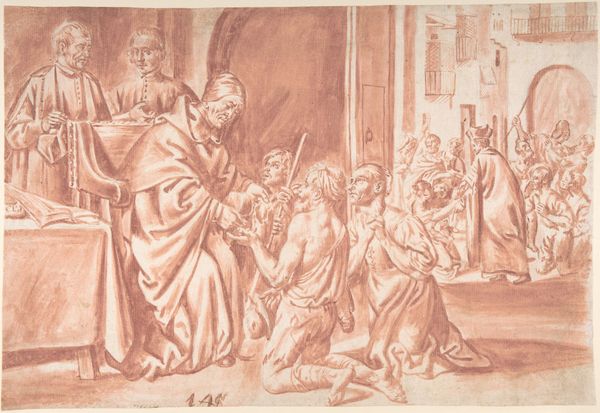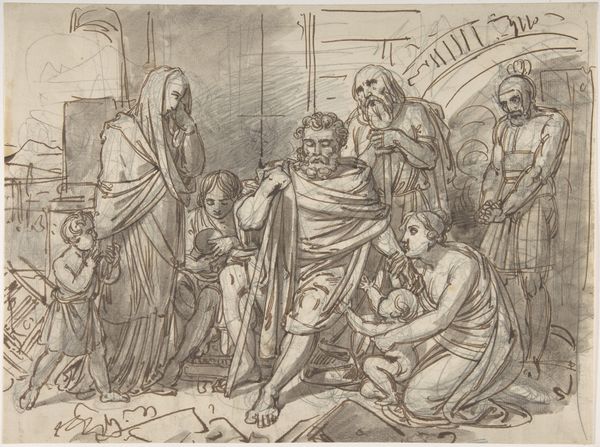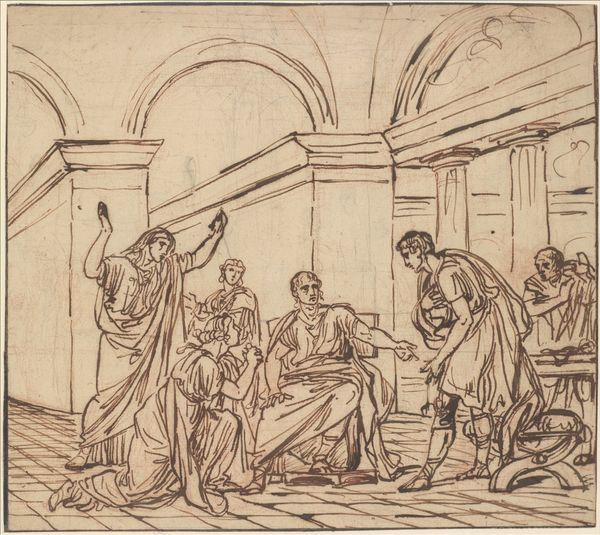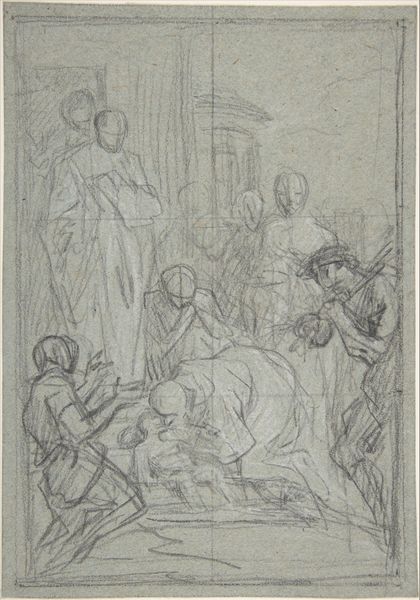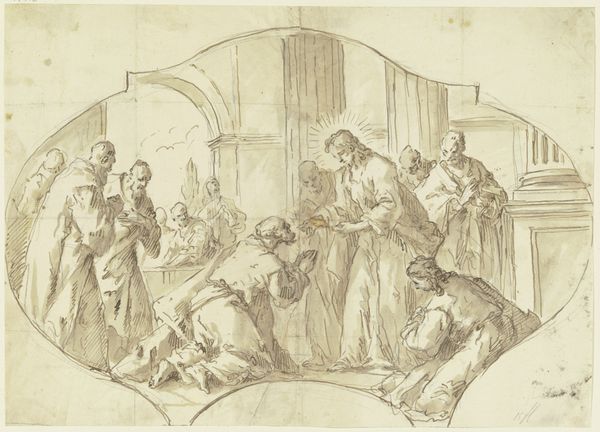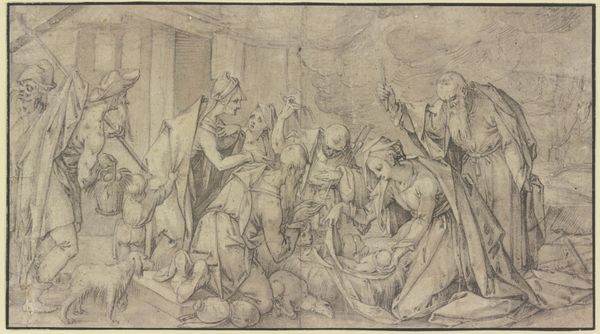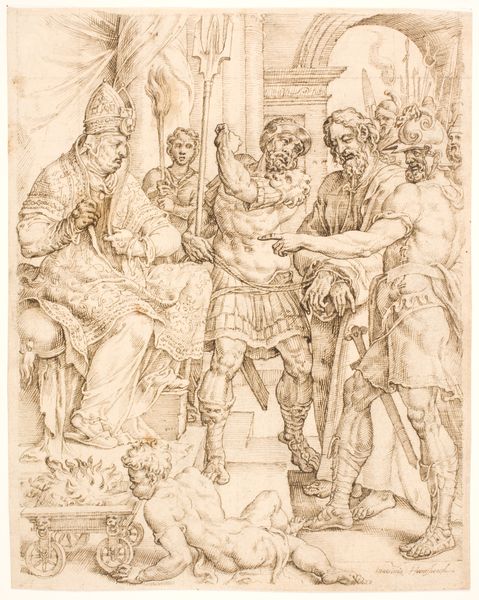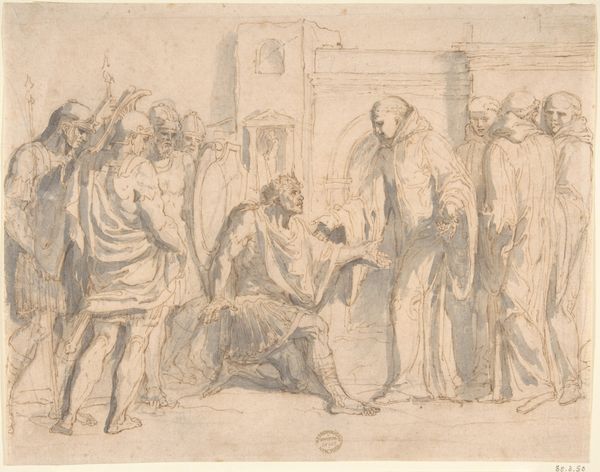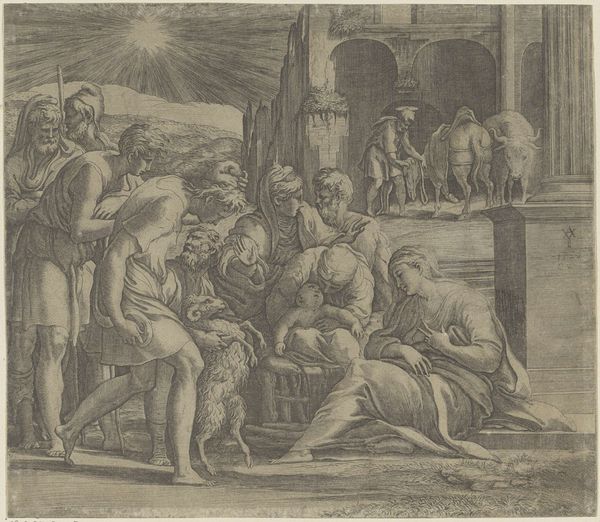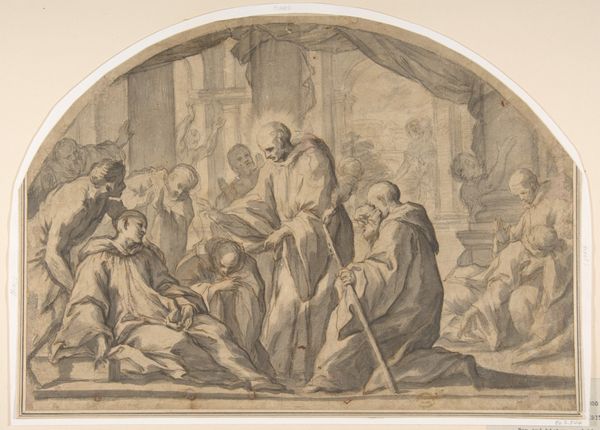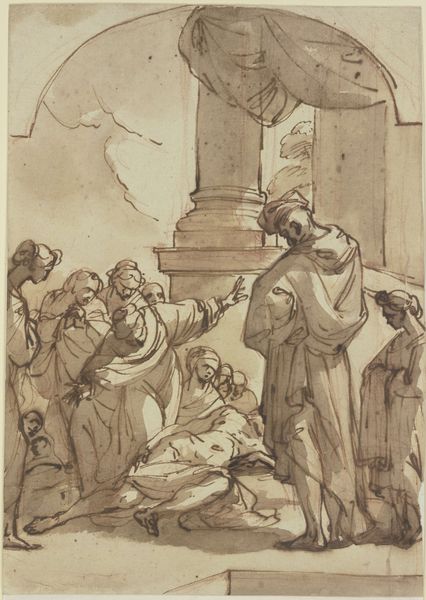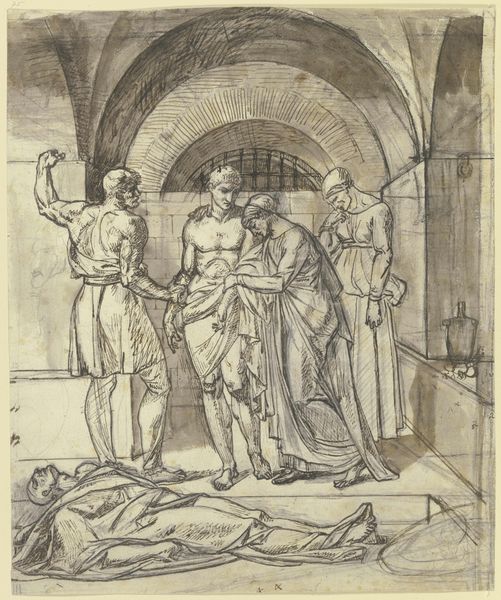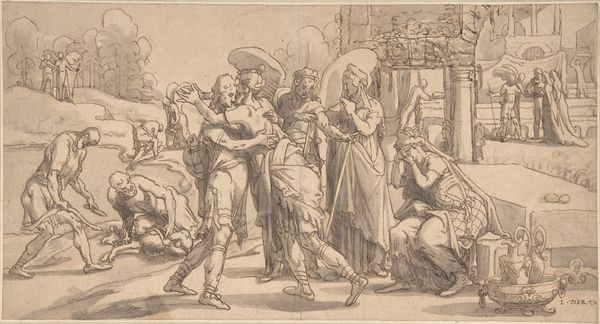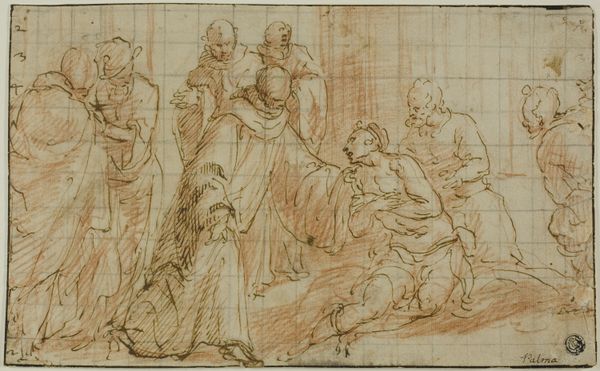
drawing, print, paper, ink, pencil
#
portrait
#
drawing
#
ink drawing
#
narrative-art
# print
#
paper
#
ink
#
pencil
#
history-painting
#
academic-art
Dimensions: 10 5/8 x 14 1/2 in. (27 x 36.8 cm)
Copyright: Public Domain
Editor: This is Heinrich Friedrich Füger’s "Belisarius Begging for Alms," created sometime between 1765 and 1818. It’s a pencil and ink drawing. There’s something incredibly moving about the composition; the figures seem both classically posed and emotionally vulnerable. What strikes you when you look at this piece? Curator: The dynamism of line is immediately apparent. Füger uses a confident, almost frantic, network of strokes to delineate form and shadow. Note how the architectural elements, like the column fragments, are rendered with a similar energy to the figures themselves. This flattening of subjectivities creates a tension; the setting itself seems to bear witness to Belisarius’s plight. Editor: I see that. The architectural elements feel less like background and more like active participants. How does that contribute to the overall meaning? Curator: It suggests a world where even the solid, immutable structures of power are crumbling, mirroring Belisarius's fall from grace. The lines of perspective aren’t neatly resolved; the space feels slightly unstable, as though about to collapse. That sense of precariousness is key to understanding the drawing's emotional impact. Consider also the formal opposition between the curves of the figures, especially the begging woman, and the rigid lines defining the architecture and even Belisarius. Editor: So the formal elements—the lines, the composition—really emphasize the narrative's themes of power and vulnerability? Curator: Precisely. The artwork's emotional and symbolic weight is conveyed not merely through the subject matter but through its very construction. It’s a powerful testament to the expressiveness inherent in the formal properties of drawing. Editor: This really opened my eyes to how the artist’s technique directly shapes the viewer's emotional response. Curator: Indeed. It's a reminder that form is never merely decorative but integral to meaning.
Comments
No comments
Be the first to comment and join the conversation on the ultimate creative platform.
